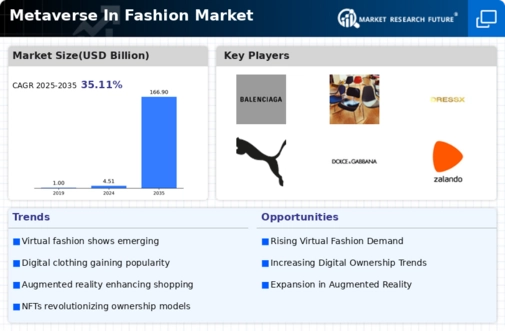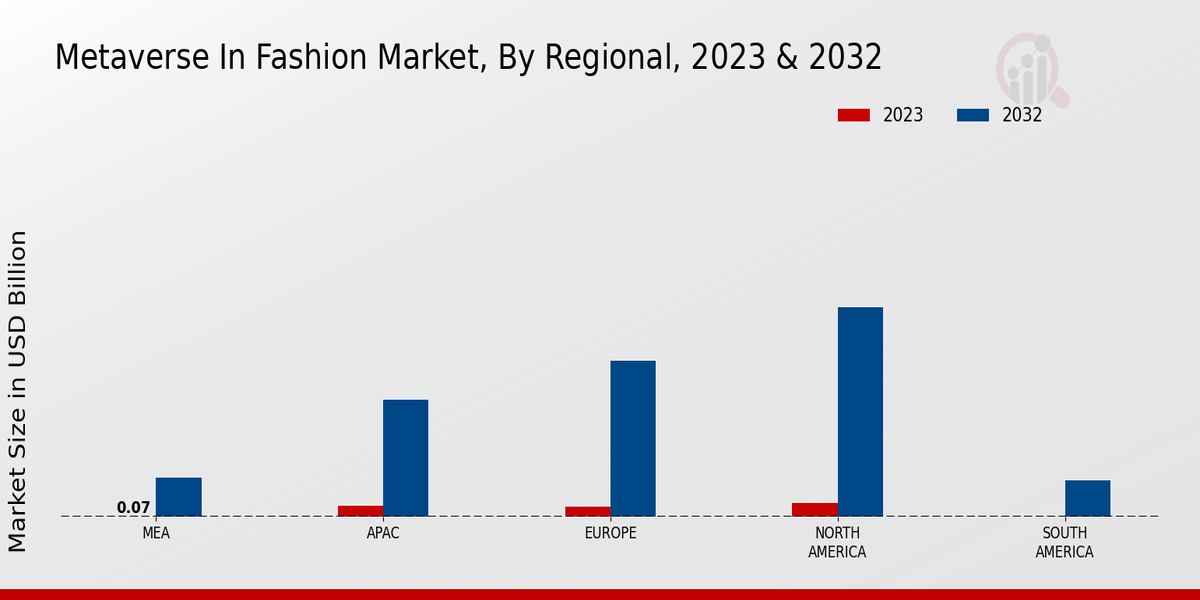Market Growth Projections
The Global Metaverse In Fashion Market Industry is poised for remarkable growth, with projections indicating a market size of 4.51 USD Billion in 2024 and an astonishing increase to 166.9 USD Billion by 2035. This trajectory suggests a compound annual growth rate (CAGR) of 38.86% from 2025 to 2035, reflecting the increasing integration of digital fashion into everyday life. The anticipated growth is driven by various factors, including technological advancements, changing consumer preferences, and the rise of virtual experiences. As the market evolves, stakeholders must remain agile to capitalize on emerging opportunities.
Emergence of Digital Fashion Influencers
The emergence of digital fashion influencers is a noteworthy phenomenon within the Global Metaverse In Fashion Market Industry. These virtual personalities, often created through advanced CGI technology, are gaining traction on social media platforms, attracting substantial followings. Their influence on consumer purchasing decisions is profound, as they promote virtual clothing and accessories to their audiences. This trend indicates a shift in marketing strategies, where brands are increasingly investing in digital influencers to reach tech-savvy consumers. As this sector expands, it is likely to play a pivotal role in shaping the future of fashion marketing in the metaverse.
Integration of Blockchain for Authenticity
The integration of blockchain technology within the Global Metaverse In Fashion Market Industry is emerging as a critical driver for ensuring authenticity and transparency. As counterfeit products pose a significant challenge in the fashion sector, blockchain offers a solution by providing verifiable proof of authenticity for digital assets. This technology allows consumers to trace the origin of their virtual garments, fostering trust and loyalty. As brands increasingly adopt blockchain solutions, the market is expected to benefit from enhanced consumer confidence, potentially leading to accelerated growth rates in the coming years.
Rising Consumer Interest in Virtual Fashion
The Global Metaverse In Fashion Market Industry is witnessing a notable surge in consumer interest towards virtual fashion. As digital environments become increasingly immersive, consumers are drawn to the idea of expressing their identities through virtual clothing. This trend is particularly evident among younger demographics, who are more inclined to engage with digital avatars and virtual fashion shows. In 2024, the market is projected to reach 4.51 USD Billion, reflecting a growing acceptance of digital fashion as a legitimate form of self-expression. This shift indicates that brands must adapt their strategies to cater to this evolving consumer behavior.
Technological Advancements in Virtual Reality
Technological advancements in virtual reality (VR) are significantly propelling the Global Metaverse In Fashion Market Industry. Innovations in VR technology enhance user experiences, allowing consumers to interact with fashion in ways previously unimaginable. For instance, brands are utilizing VR to create virtual showrooms and fashion experiences that simulate real-life interactions. This immersive approach not only captivates consumers but also drives sales in the digital realm. As the technology continues to evolve, it is likely that the market will expand, with projections indicating a growth to 166.9 USD Billion by 2035, suggesting a robust future for virtual fashion.
Collaboration Between Fashion Brands and Gaming Platforms
Collaboration between fashion brands and gaming platforms is reshaping the landscape of the Global Metaverse In Fashion Market Industry. Major fashion houses are partnering with popular gaming platforms to create exclusive virtual collections, thereby reaching a broader audience. These collaborations not only enhance brand visibility but also introduce fashion to a demographic that may not traditionally engage with it. The potential for cross-industry partnerships appears vast, as brands leverage the gaming community to drive sales and engagement. This trend may significantly contribute to the market's projected CAGR of 38.86% from 2025 to 2035.























